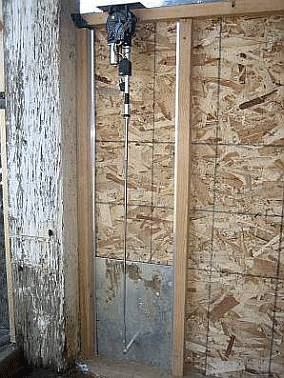AdamKristin:
I'm happy you found something that works for you. I agree that in some cases it's best to just go with an off the shelf solution.
There is one thing I should bring up here: reliability. I have a fair amount of experience working with X-10 in "hands-off" computer controlled systems -- in my first job out of college one of our products was an X10 interface card for home automation. X-10 is infamous for its unreliability. If you're controlling a light manually it's not usually a problem: you see the light doesn't go on, so you hit the button again. But in a computerized system there is no such feedback, so the "work around" is to send each command multiple times in the hope that at least one will get through OK.
Now, if you're just turning the lights on & off in your house so it looks lived-in while you're away, or you want them to come on when your car gets in the driveway, X10 will be OK. But it's not intended for anything critical.
Commands are often garbled as they go across the powerline. This is often the case in households with many computers as some power supplies can put a lot of electrical noise on the powerline. If your X-10 controller is on one side of the split-phase AC coming into your house, and the controlled device is on the other side, there is often no communication. X-10 sells a phase connector box to solve this very problem. In my house this happens occasionally with one light behind my entertainment center. I just turn on the oven or other 220V appliance momentarily to connect the phases, hit the button and the light turns on/off.
I don't want to rain on anyone's parade, but if you're concerned about the safety of a flock, I would not rely on X10 to control the door.
[edit]
Oh, I forgot to add: a pilot-duty relay is just a relay that's rated for low current. It should be fine to control your actuator. They got the name "pilot duty" because they were initially used to control even larger relays (contactors) that switched huge loads.
--Lyndon




